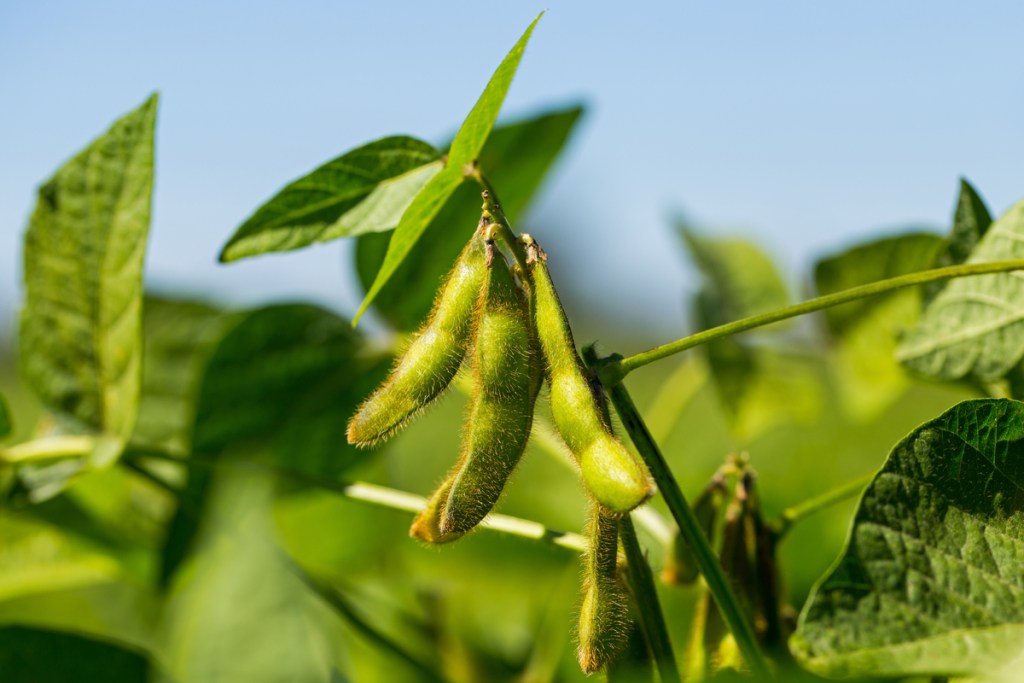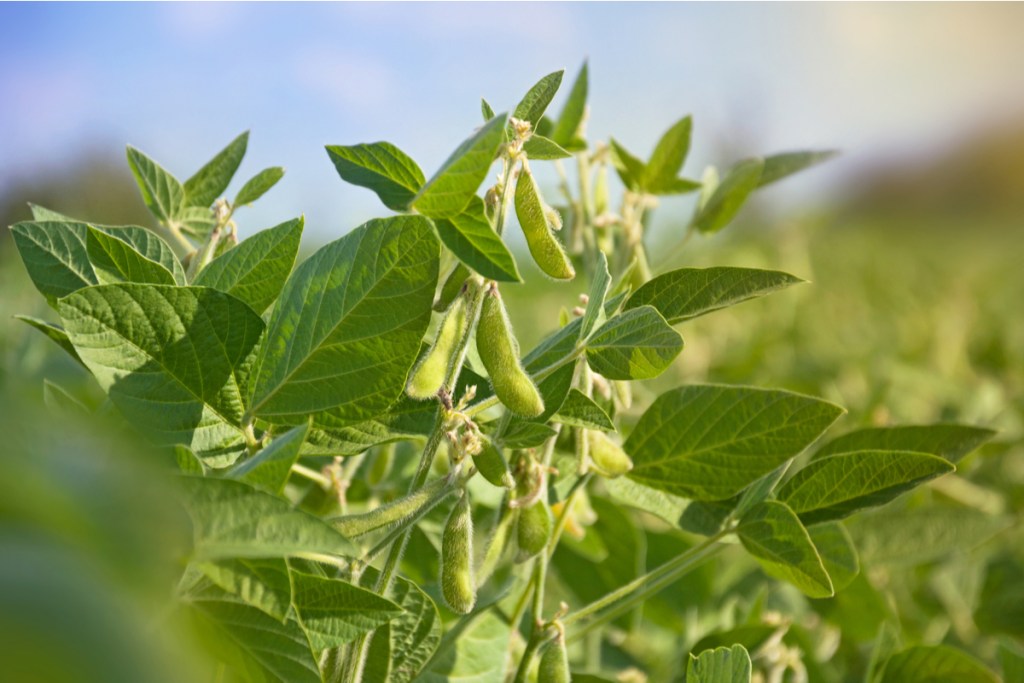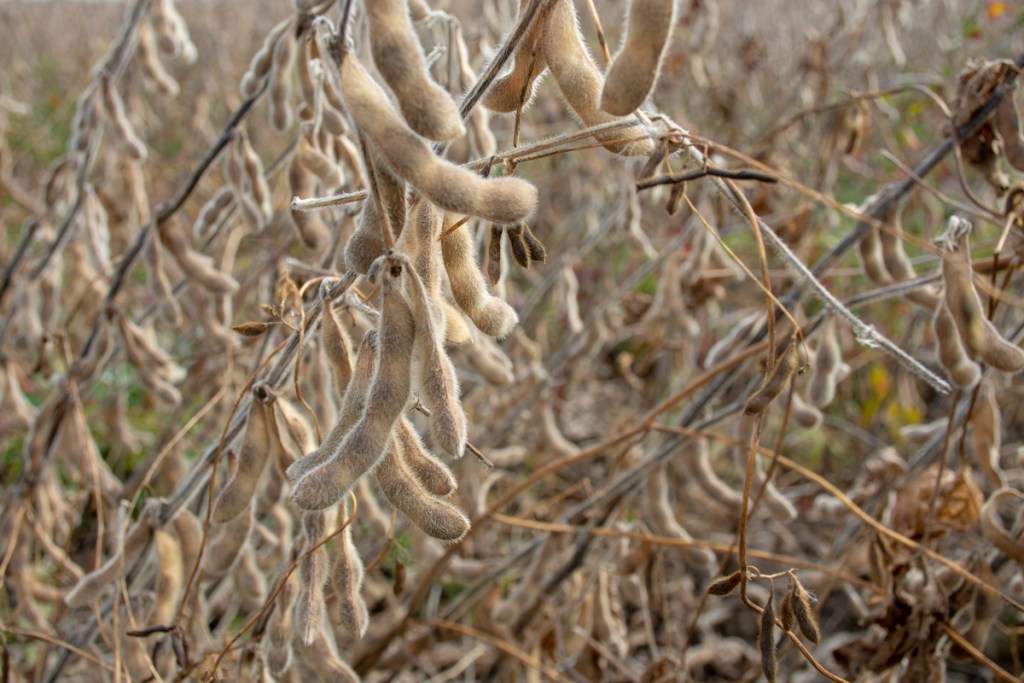Soybeans are in a lot of products we cook with and eat regularly, like soy sauce, edamame, soy milk, and tofu. However, we don’t typically think of soybeans as something that can be grown at home. That doesn’t have to be the case, though! You can easily add soybeans to your vegetable garden so you can have fresh, tasty soybeans whenever you want.
Eager to get started? Then you’re in luck, because we’re about to tell you everything you need to know about planting, caring for, and harvesting soybeans at home.
When and how to plant soybeans
Soybeans are native to southeast Asia, where the climate tends to be hot and humid. As you might have guessed from that, soybeans don’t tolerate cold, dry weather very well. Typically, they’re planted in late spring to early summer, although you may be able to grow them year-round if you have a greenhouse or live in a tropical or near-tropical region. Soybeans do take a while to grow, so if you have early winters or particularly cold falls it’s better to plant them in late spring.
For the best harvest, plant your soybeans in rich, well-draining soil where they’ll receive full sun. Although soybeans will tolerate partial shade and poor soil, you won’t see as large of a harvest. Plant the seeds roughly half an inch deep, and space them five to six inches apart. You can plant them closer together than five inches, but be prepared to thin them if more seeds sprout than anticipated.

Caring for soybeans
Consistent moisture is important for soybeans to grow properly. Keep the soil moist but not soaking wet, as soybean seeds will sometimes crack or split if they get too wet. Instead, water them gently, spreading the water out over the entire patch of soil instead of focusing specifically on where the seeds are planted.
Once the seeds sprout, try to water them below the leaf level as much as possible. Soybeans are fuzzy plants and can easily develop problems if their leaves stay wet for too long. Additionally, overhead watering can sometimes knock flowers or seed pods off of the plant. A layer of mulch can help the soil retain water for longer, which reduces the amount of time you’ll need to spend watering your soybeans.
Soybeans don’t typically need any fertilizers, although adding compost to your soil if your soil is poor can be beneficial. If you do fertilize your soybeans, it’s important to avoid nitrogen-heavy fertilizers. Soybeans are nitrogen-fixing plants, meaning they absorb nitrogen from the air, which is added to the soil when their roots break down. Adding more nitrogen via a fertilizer can lead to a buildup of nitrogen in the soil, which causes nitrogen burn.

Common problems when growing soybeans
Soybeans are sometimes bothered by pests who love these lovely legumes as much as we do. Depending on where you live, you may encounter damage from beetles and whiteflies or mammals such as deer, rabbits, and groundhogs. Mammals can often be kept out with fences, especially fences with noise-making attachments, while insects can be kept away with your pest repellent of choice.
Powdery mildew can also become an issue. It forms when the leaves are wet for an extended period, especially at night when the temperatures are cooler. Fungicides can help with mild cases and prevent it from spreading, but in more severe cases the best solution is to remove infected limbs or, in extreme cases, the entire plant.
Another potential issue comes from the shallow root system that soybeans have. If your soil is weak, overly loose, or you have a pet that likes to dig, you are at risk of your plant tipping over. A layer of mulch can help weigh your plant down and keep it grounded. Although soybeans stay fairly short and don’t typically need to be staked or supported, a stake may be useful if you live in an area with strong winds.

How and when to harvest soybeans
Soybeans can be harvested both as mature and immature pods. Immature pods are called edamame and can be harvested when they are two or three inches long. They should be a solid, bright green color. The pods should be fleshed out and full, with noticeable bumps where the seeds are. If the pods are thin without noticeable bumps, they likely aren’t ready.
Mature pods are ready for harvest when they’re solid brown or gray, depending on the variety. The leaves of the plant should be drying out and turning brown at the same time. They should still be fairly plump and full, though, and should be harvested before they dry out completely. To harvest mature or immature soybeans, gently but firmly twist, cut, or snap the pods off of the plant. Soybeans can be blanched and frozen or stored in a container in a cool, dark, dry place.
Soybeans are a delicious, versatile, and nutritious vegetable. Whether you use them as a protein-rich meat replacement or just like to crunch on edamame, these legumes are an excellent addition to any vegetable garden. No matter what you choose to do with them, this guide can help you start growing your very own soybean garden. You can even grow them in containers, although you’ll likely need more than one plant to fully satisfy your soybean cravings!



